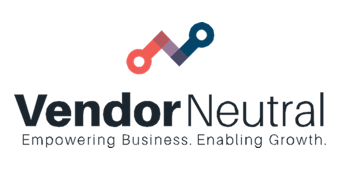Drive Growth with a Sales Technology Audit Process
Why a Well-Developed Sales Technology Audit Process Is a Must
How to Align Stakeholders, Define Requirements, and Drive Adoption
Too often executives within sales organizations see a problem and jump at a sales technology solution to fix it. This is a recipe for poor adoption rates, bloated sales technology stacks, needless sales technology churn, and little to no return on investment. For the successful selection, adoption, and integration of sales technology, the first step in the process must be a detailed and thorough evaluation, or sales technology audit process.
Components of a Sales Technology Audit
When most organizations think of performing a sales technology audit, they think exclusively about the tools. The more effective strategy, though, is taking a holistic, systems-level view of your overall sales technology strategy.
This means auditing the following elements:
- Relevant stakeholders
- Processes
- Sales technology
“When creating a strategic approach to your sales technology selection, integration, and adoption, one of the overarching goals is to create a repeatable process.”
Why Does the Sales Technology Auditing Process Matter?
If you don’t know where you are, you can’t hope to create an effective, efficient, and productive means of getting where you want to be. The auditing process helps you assess your current state. Only once you’re armed with that information will you be in an informed enough position to start setting goals and making plans for moving forward.
It’s vitally important to do this evaluation stage of your people, processes, and sales technology in the beginning. It gives you a holistic view of your sales organization today and allows you to create a systems-level understanding of the business. This, in turn, gives you clarity into how to build effective connections across those relevant components: people, processes, and technology.
Having a sales system is the only way to successfully integrate those components, and the auditing stage gives you the data to confidently and competently build this.

9 Benefits of Performing Sales Technology Audits
1. Set Effective, Realistic Goals
Having a clear sense of where your sales organization is makes goal-setting more productive and effective. There’s no way to assess whether a goal is realistic if you don’t know your starting point!
2. Successfully Integrate People, Processes, and Sales Technology Solutions
When you carefully examine all aspects of your sales organization and overall sales strategy, you’re able to align your goals to your processes, strategies, and organizational needs. This is a vital step in properly integrating together people, processes, and sales technology and implementing any systems-level changes that will improve the overarching approach.
3. Provide Value to the Customer
Having a well-defined process for auditing your stakeholders, processes, and tools, ultimately, equates to better alignment between your individual stakeholders and departments, better defined requirements, and improved adoption of the tools that make the sales cycle more seamless, smooth, and valuable for the customer.
Having an overarching strategic framework for sales technology starts with a thorough auditing process, and the end result is a better experience for the customer—at every stage of the buyer’s journey.
4. Create a Repeatable Process
When creating a strategic approach to your sales technology selection, integration, and adoption, one of the overarching goals is to create a repeatable process. In sales, you’re always going to have new stakeholders. (Churn is a massive issue within sales organizations.) You need a thought-out, implementable plan for auditing new sales professionals, determining their challenges, goals, and requirements and incorporating that input into your sales technology strategy.
You also need to be cognizant that this process is never “complete.” Consistently auditing existing stakeholders is important to ascertain if needs and challenges have changed over time.
5. Determine Sales Technology Overlap and Gaps
In terms of revenue impact, this is one of the most important steps. An audit of your sales technology tools can reveal areas where you have gaps (a need that isn’t currently being fulfilled by a sales technology tool) and overlap (areas where you have multiple tools filling the same need).
A thorough audit helps ensure you are using your funds in the wisest way possible. During this audit, some commonly uncovered problems include the following:
- You’re paying for the premium edition of a sales technology tool and only using a limited number of its features.
- You’re paying for a handful of sales technology solutions that a single (more cost-effective) tool could do.
- Stakeholders are not using the available sales technology tools at all.
- Low adoption is one of the biggest contributors to a poor return on investment with your sales technology. Learn 10 tips to increase your adoption rate.
- Stakeholders are only using a limited number of sales technology features.
- Stakeholders are misusing the available sales technology.
- Existing sales technology tools require more time to use than they save.
- You’re experiencing gaps not only in your needs and the available sales technology but between your people, processes, and sales technology stack.
6. Pinpoint Issues with Your Adoption Rate
Low adoption of sales technology happens for a lot of reasons. Maybe the sales professionals haven’t received adequate training and don’t know how to use it. Maybe they aren’t even aware of all its functionality. Maybe the tools takes too much administrative time, and it’s not worth it for the sales professional to use it.
Until you audit your stakeholders and get the information directly from them, you’re just guessing.
Effectively evaluate why you’re seeing poor adoption, and then you can make a strategic plan of attack for addressing the underlying problems. This is a vitally important step in creating a healthy, sustainable sales technology ecosystem.
7. Align Your Stakeholders
If you want to align your stakeholders, an audit of them must focus on their needs and requirements. This is an important time to listen. Don’t impose your assumptions or ideas onto the individual stakeholders. Ask the high-level questions, and then give them the time and space to answer.
Don’t be defensive. The specific problems they’re experiencing can help reveal small issues that need to be resolved, but it can also uncover more overarching systems-level issues with communication, motivation, accountability, and more.
Their insight is invaluable, and genuinely listening to them makes them feel more connected and engaged with the sales process.
8. Determine Where You Need Supporting Processes and Content
After auditing your stakeholders, you’ll have a much better idea of what those people actually value and need in the course of their jobs. This will illuminate what supporting materials they need, and this can directly guide your content creation efforts. It will also reveal what systems and processes they need to have put in place for the most success.
9. Drive Growth
Done with strategy and forethought, creating systems and a framework from what you learned during the auditing process can help your organization drive predictable, sustainable, scalable growth. It can positively affect your customer experience and, by extension, your revenue streams.
Do you have any questions about how the auditing process should look in your organization? Want to discuss specifics? Reach out. We’re sales technology consultants and a trusted resource among executives and other senior decision-makers. We’re always happy to lend our expertise and to provide insight where it can help!


